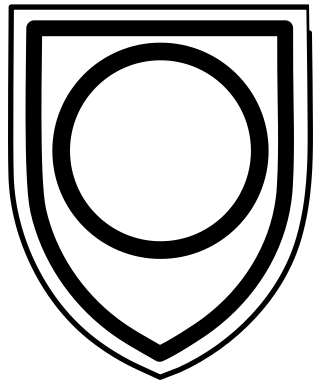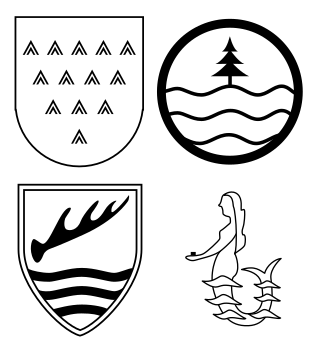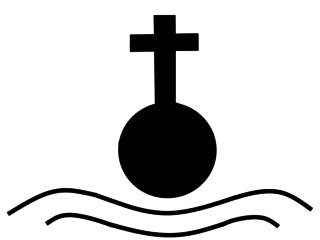History
The 389th Infantry division was formed on 27 January 1942 as a division of the 18th mobilization wave on the training area in Milowitz near Prague. The Motto of the division was "Der Sonne Rad mit Schild und Speer, dem Rhein, dem Reich zu Wehr und Ehr".
It was designed as a "Sturm- und Stoß" division (English: storm and impulse division), whose soldiers had to run through a hard training and a long conscription to fight on the foremost part of the front. The soldiers were mostly veterans of the previous campaigns on the Western Front and the Invasion of Poland. From May 1942 onwards, it was employed in battles on the Eastern Front as a part of the 6th Army under the command of General der Panzertruppe Friedrich Paulus. After he had taken over the command in January 1942, the Red Army launched an offensive near the city of Kharkov. The German troops could repel the attack and conducted a successful counter-offensive, during which they encircled the Soviet formations. In this engagement, the Red Army sustained great casualties.
The 389th Infantry Division also participated in the German summer offensive Operation Blau, which had the aim to capture the Caucasus and Stalingrad. Stalingrad should then be used to prevent the Soviet forces from using the Volga as a supply route. The 6th Army should advance to Stalingrad. After the start of the offensive on 28 June 1942, Axis forces of Army Group B could advance quickly. By 23 August, German units reached the Volga north of the city. It was then planned that the 6th Army should encircle the Soviet 62nd and 64th Army together with 4th Panzer Army. The 4th Panzer Army started the attack regularly on 29 August. However, the 6th Army was still confronted with a Soviet counter-attack. Therefore, it could only attack 3 days later. This gave the Soviet forces to withdraw from the future pocket. During the Battle of Stalingrad, the 389th Infantry Division was the main force of the failed attack on the tractor factory. During the Soviet counter-offensive beginning under the codename Operation Uranus on 19 November 1942, the division's remnants were captured after the Axis capitulation on 2 February 1943.
The division was reformed from 17 February 1943 onwards in France. Its forces consisted of survivors and persons, who had been in furlough. In the end of September 1943, the 389th Infantry Division was redeployed on the Eastern Front, where it took part in fierce engagements in Dnjepr section causing high casualties among the division's forces. Afterwards, on 25 January, the 2nd Ukrainian Front conducted a massive attack, due to which forces of the 57th Infantry Division were sent to help the 389th Infantry Division. However, the support arrived too late and the division could just take up remnants of the 389. ID. As the 2nd Ukrainian Front then marched North, this division was pushed into the Korsun-Cherkassy Pocket.
Again, the 389. ID was reformed in Hungary in March 1944 and employed as part of Army Group North in the Kurland Pocket, where it fought until February 1945. Then, it was redeployed to Western Prussia. In the end of the war, it was captured by Soviet forces on the Hel Peninsula.
The 10th Infantry Division was created in October 1934 under the cover name Wehrgauleitung Regensburg to hide its violation of the Treaty of Versailles. It was renamed the 10th Infantry Division when the establishment of the Wehrmacht was announced publicly in October 1935.
The German 206th Infantry Division, was a military unit that served during World War II. Like most German infantry units it had no motorization, and relied on leg and horse mobility.

The 13th Panzer Division was a unit of the German Army during World War II, established in 1940.

The 22nd Infantry Division, which soon became the 22nd Air Landing Division, was a specialized German infantry division in World War II. Its primary method of transportation was gliders. The division played a significant role in the development of modern day air assault operations. Towards the end of the war, the formation was reshaped into the 22nd Volksgrenadier Division.

The 334th Infantry Division was a German Army infantry division in World War II. Originally formed in November 1942, it surrendered to the Allies at the conclusion of the Tunisian Campaign in May 1943. The division was reconstituted on 3 June 1943 in France within the 1st Army, with the staff of the 80th Infantry Division as well as remnants of the old division and replacement units. It spent the remainder of the war serving on the Italian Front.

The 71st Infantry Division Kleeblatt was an infantry division of the German Army, raised on 26 August 1939, shortly before the outbreak of World War II, as a division of the 2nd wave of deployment by Infantry Commander 19 in Hildesheim. It fought in Verdun, Stalingrad and Monte Cassino, among others.

The 161 Infantry Division was a major unit of the German Wehrmacht. It fought in the Battle of France, and then later on in the Eastern Front.

The 26th Infantry Division was a pre-World War II German Infantry Division of the 1st mobilisation wave. It was mobilised for World War II on September 26, 1939, disbanded on September 10, 1944, near Radom and reformed as the 26th Volksgrenadier Division on September 17, 1944, near Poznań by absorption of the new 582nd Volksgrenadier Division of the 32nd mobilisation wave. Remnants of the Division entered U.S. captivity in the Harz region in 1945.
The 21st Infantry Division was a German military unit which fought during World War II.

The 305th Infantry Division was a German Army unit that saw extensive, front-line action during World War II. This division was present at the Battle of Stalingrad, the Battle of Monte Cassino, and surrendered to U.S. Army's 88th Infantry Division in Northern Italy near Trento in late April 1945.

The 14th Panzer Division was an armoured division in the German Army during World War II. It was created in 1940 by the conversion of the 4th Infantry Division.

The 15th Infantry Division was an infantry division of the German Army during the interwar period and World War II, active from 1934 to 1945.
The 708th Infantry Division was a German Army infantry division in World War II.

The 214th Infantry Division was a German division in World War II. It was formed on 26 August 1939.

The 134th Infantry Division was a German division in World War II. It was formed in October 1940.

The 88th Infantry Division was a major fighting formation of the German Army (Wehrmacht). It was created in December 1939, and first saw combat in the Battle of France, and was then posted to security duties. From December 1941, the division was shifted to the southern sector of the Eastern Front, where it fought until February 1944 when it was encircled near Cherkassy and virtually destroyed.
The 137th Infantry Division was a major fighting formation of the German Army (Wehrmacht). It was created in October 1940, and first saw combat in Operation Barbarossa as part of Army Group Centre. The division remained on the central sector of the Eastern Front, where it participated in heavy fighting.

The 384th Infantry Division was formed during the winter of 1941/42, as part of the 18th wave. All infantry divisions of this wave, numbers 383 to 389, were referred to as “Rhine Gold” divisions. The 384th was sent to the 3rd Panzer Corps, 1st Panzer Army, just in time to be involved in defensive fighting during the Soviet offensive in the Second Battle of Kharkov, early in the summer of 1942. Afterwards, the division took part in the offensive operations that led to Stalingrad. After the Soviet counteroffensive, Operation Uranus, most of the combat elements of the division were split between the 44th and the 376th Infantry Divisions, but both were surrounded at Stalingrad and destroyed.

The 376th Infantry Division was an infantry division of the German Army during World War II, active from 1942 to 1944 in two separate instances.

The 371st Infantry Division, was an infantry division of the German Army during World War II, active from 1942 to 1945 in two separate instances.















